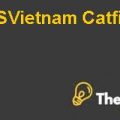
The impact of cultural values on brand strategy
Culture has been the increasing concept that has knowledge, custom, belief, habits and practices that have been able to acquire the society. Culture basically operates primarily by actually setting up boundaries for the individual’s behavior. A major significance of culture has been impacting consumption patterns of the institution and the individual. Culture in fact plays an important role in actually influencing customer buying and spending patterns.
In the recent past, it has been observed that all successful brands have tried to customize themselves as per the culture. Indeed it is a fact that culture has a major impact on the success and failure of the brand. When a brand enters a culture that is different to the brand’s original culture then it has to carefully blend itself by customizing or tinkering its offering by customizing as per the cultural requirements. To become a part of a new culture, the company has to manage the brand identity also and consider to create and develop a blend of the two cultures. Therefore, it can be said that with the brand entering a new culture, it has to look upon various aspects and elements to actually become a part of the new culture in a rather effective and efficient manner.
The Hofstede cultural values
Power Distance
In power distance dimension, India has scored 77 which indicates that the hierarchical structure of the country is top down structure in organizations and even in the society. The summary of the power distance of India is that bosses are the power holders who take decisions for the company. Along with this, the acceptance of unequal rights between those people that are power privileged and the ones who are less, the immediate bosses or the supervisors, directors, paternalistic leaders are the ones who reward and recognize employees for their performance.
Individualism
India scores 48 which is an intermediate score where both individualistic and collective traits occur in Indian society. This generally means, that the high preference for being a part of the large social framework where individuals are rather expected that the greater ones in a group. Along with this, the individualistic aspect or the element of Indian society is seen as a result of its dominance through religion and philosophy. The religious belief of Hindus believe that human die and are reborned where each birth is dependent upon how the individual has lived in the previous life.
Masculinity
India scores 56 on this dimension and is considered a male oriented society. India has become a male dominated society with the command over things. Along with this, the Indian society is a spiritual one with millions of deities and religious where many cultures exist. . Work is the center of one’s life and visible symbols of success in the work place are very important. This basically aims at the material gains with focus on success and achievement.
Uncertainty avoidance
With respect to uncertainty avoidance dimension, India scores 40 which is low in terms of preference for avoiding uncertainty. In India, people are generally content with the imperfection also. Along with this, the country is patient where the level of tolerance for the unexpected is quite high. This is one of the most empowering attitudes of the country. “Nothing is impossible” in India, this is not an attitude and people do come up with a solution somehow.
Pragmatism
In Pragmatism dimensions, India scores 51 which have indicated that the preference is for a long term pragmatic culture. The concept of Karma is a concept of philosophical and religious thoughts. Time is not a linear attribute; in fact it is not important to western societies. Countries or cultures that score high on pragmatism lack punctuality where the people have different plans to overcome different situations and problems.
Indulgence
India scores quite low with 26 for indulgence which explains that the culture is restraint. Society with such low score has a tendency to pessimism and cynicism....................................
This is just a sample partial case solution. Please place the order on the website to order your own originally done case solution.
With several brands in the premium market shirt brand Arrow faced with balancing its premium associations that have been raised in the past to make the brand contemporary. The concept of "premiumness" in relation to the category has undergone a shift, with equally strong brands (compared with Arrow brand) to strengthen their positioning premiumness. Arrow faced some difficult decisions involved his original position. In principle to restore and strengthen the brand will depend on the analysis of environmental change, competitive bids from competing brands and consumer perception on the shooter and his competitors. Market premium shirt was brands that offer comparable functional properties, as well as the differentiation of the brand has been built both functional and symbolic attributes positioning positioning. The balance of these two aspects and alternating the two are in a dynamic category and the environment requires an approach that will bring some aspects of consumer behavior with respect to brand strategy. As competition intensifies, there is a need for any brand to delve into the finer aspects of consumer behavior, and not depend on the basic positioning strategies. There was a need for an analysis of how the strategy of consumer behavior can help brand positioning strategies. If the arrow will retain its category expertise? In the event that will retain its brand, "country of origin" association? If the brand is focused on the self-concept related to the consumer segment? Potpourri of concepts that can cause a new level of Arrow's brand strategy is the context associated with this business in emerging markets such as India. "Hide
by S. Ramesh Kumar, Amod Choudhary Source: Indian Institute of Management, Bangalore 9 pages. Publication Date: November 1, 2012. Prod. #: IMB385-PDF-ENG












